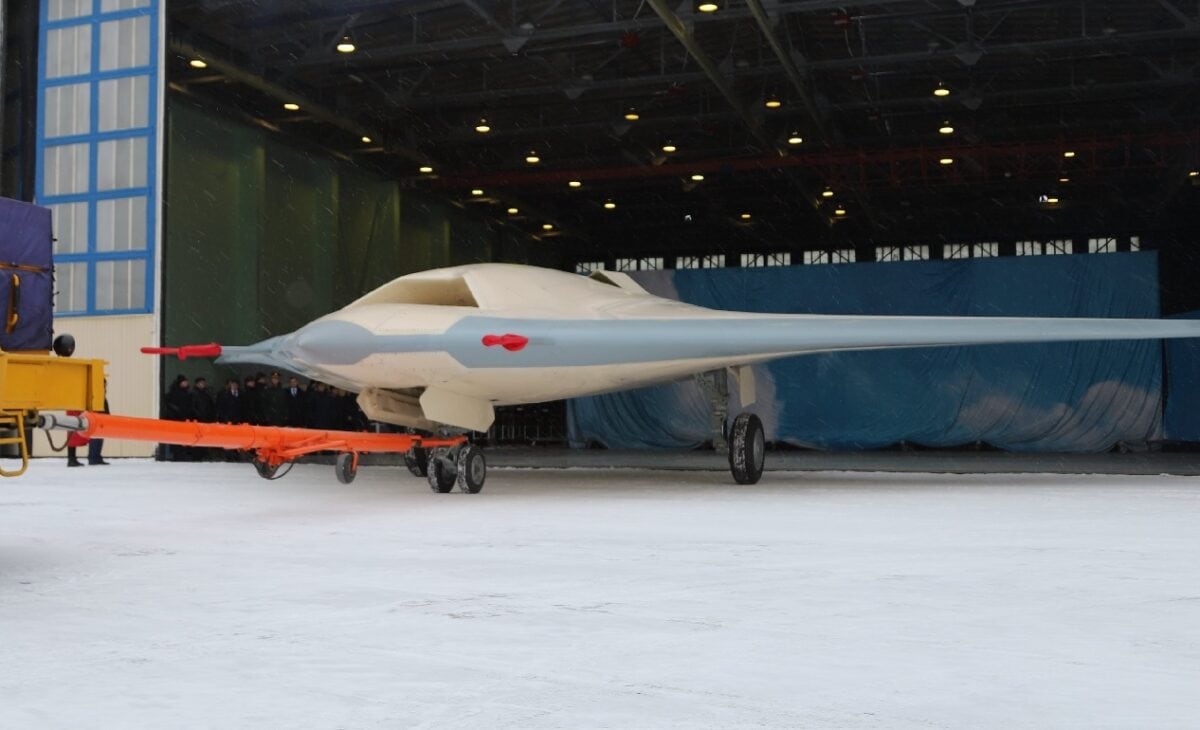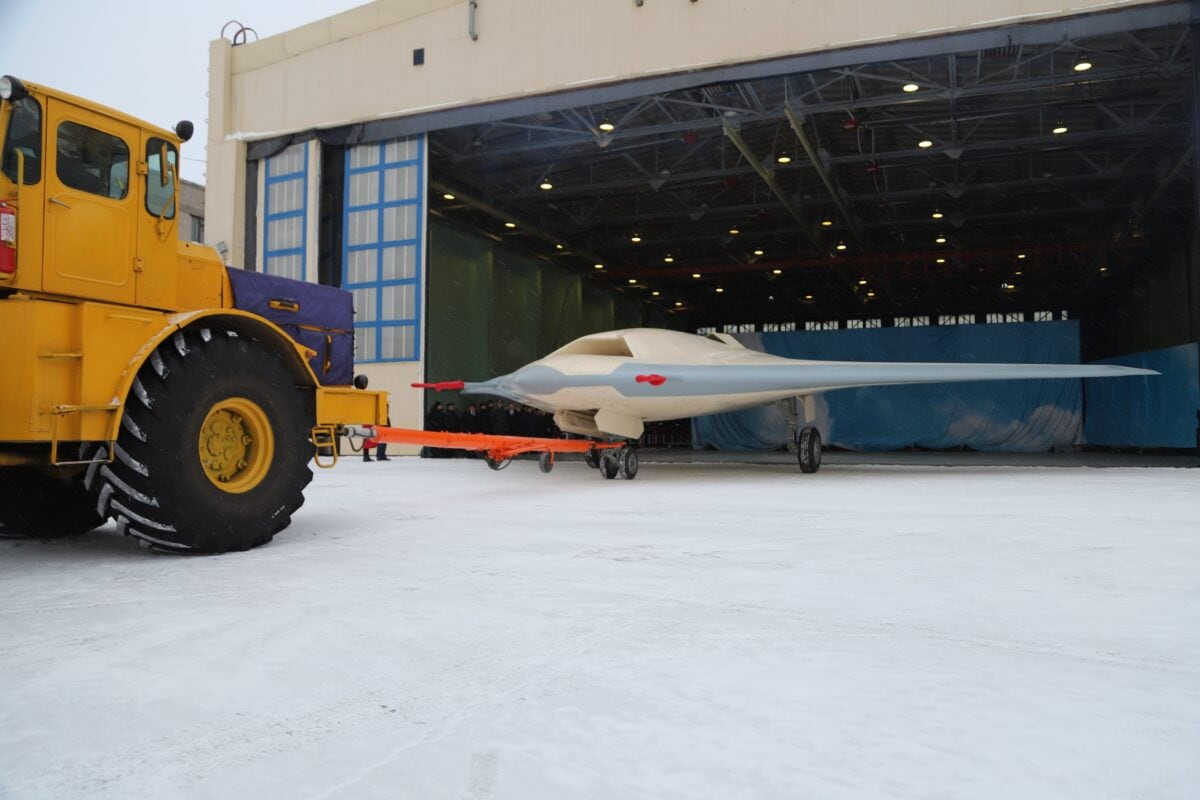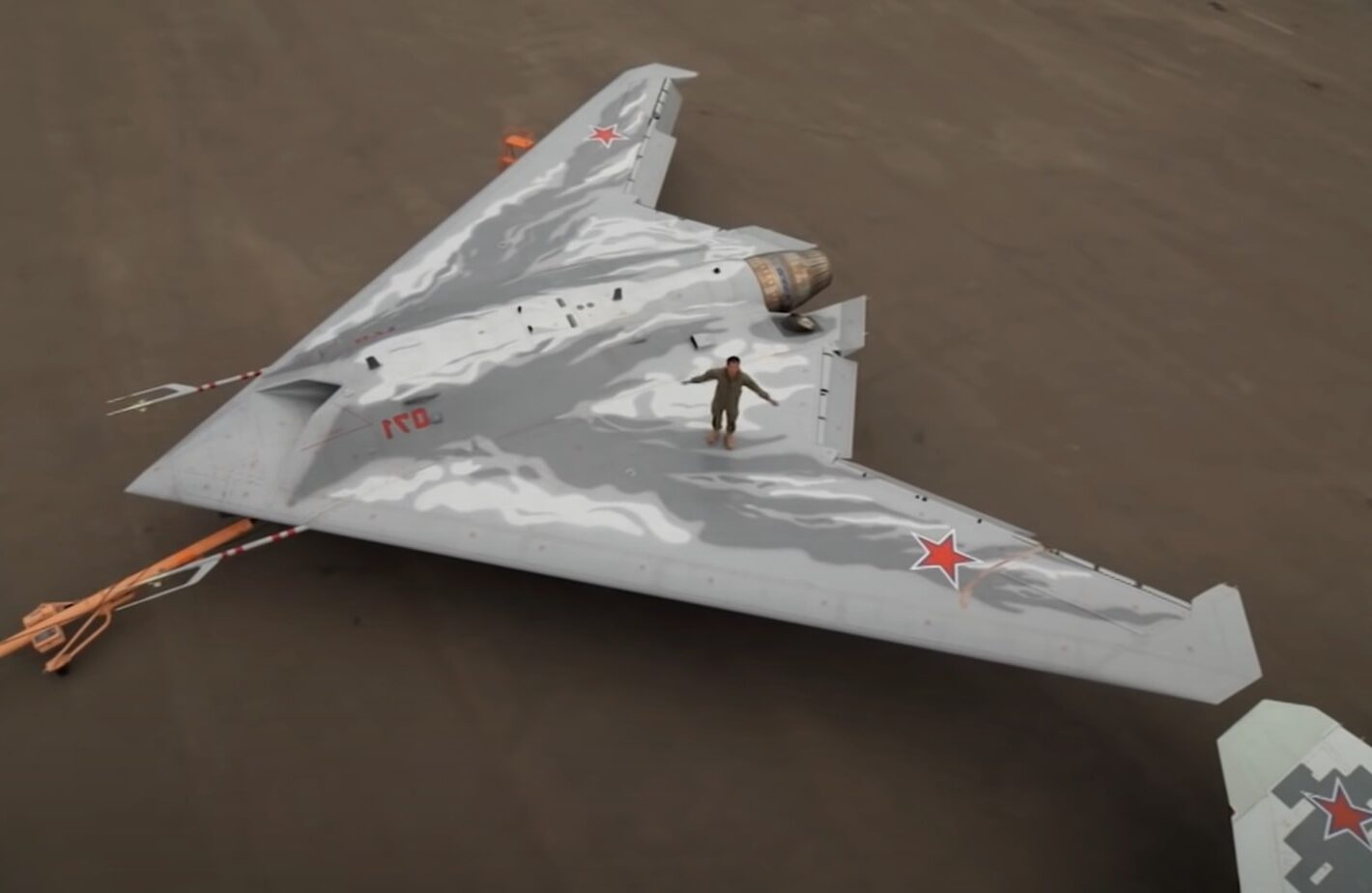Russia’s S-70 Okhotnik-B drone has reportedly received substantial upgrades to its stealth capabilities. Often imagined by the Russian defense industry and military leaders as a keystone of a future technologically-advanced Russian Aerospace Forces, the Okhotnik-B shares many characteristics with the similarly future-oriented Su-57 multirole aircraft. With the unmanned combat air vehicle (UCAV) currently still in development and likely some ways away from reaching serial production, apparent movement to upgrade the Okhotnik-B’s stealth capabilities could indicate that its development remains flexible.
S-70: What We Know
Most of what outside observers know about the S-70 is based on the mostly-managed trickle of information of out of Russia on the project.
The Okhotnik-B, or Hunter-B by the English translation of its Russian name, is a flying-wing drone reportedly able to travel at speeds of up to 1,000 kilometers per hour according to Russian state media.
The exact nature of the S-70’s equipment is unknown; however, the drone appears to feature fully internal weapons bays to carry its weapon payload. While initial versions of the drone were powered by a single Saturn Al-41F1 engine, external observers have noted that its intially exposed engine exhaust configuration without a shroud naturally would hamper its ability to remain as stealthy as intended.
Publicly released videos of the drone have featured visible radar and camera arrays, but little is known about the exact nature of these systems.
S-70 Development Track
Development on the S-70 Okhotnik-B reportedly began in 2011 when the Sukhoi Aircraft Company received a contract from the Defense Ministry to develop a heavy attack drone likely to match the development of analogous American drones in development then by Lockheed Martin and Boeing.
With its first flight heavily publicized in August 2019, the S-70’s development has been closely connected to that of the fifth-generation Su-57 multirole aircraft, with which it shares a significant number of components.
In particular, experts such as Joseph Trevithick and Michael Kofman have speculated that the Okhotnik-B is designed to serve as a “loyal wingman” to the Su-57 through connections with advanced computing systems supposedly included in the Su-57 as part of its intended role as a network-centric fifth generation aircraft.
However, it is not likely that Russia’s Su-57s have achieved that capability yet.
S-70 Stealth
Possibly to better fulfill its complementary role to the Su-57 more effectively or simply to pare down its radar signature, Russia unveiled the latest version of the S-70 with several tweaks visibly incorporated to improve its stealth capabilities. In particular, the Okhotnik-B which was revealed at the Novosibirsk Aircraft Production Association in December 2021 includes a new nozzle for the rear engine exhaust that emphasizes stealth above all else.
Other elements of the drone’s exterior were streamlined or removed, such as the antennas, exhaust vents, and air inlets. In his visit to the Novosibirsk facility, Deputy Russian Minister of Defense Alexei Krivoruchko claimed that the S-70 can operate independently and in groups, a likely reference to its hypothetical role as an Su-57’s so-called “loyal wingman.”

S-70 Okhotnik. Image Credit: UAC Russia.

S-70 Okhotnik Stealth Drone. Image Credit: UAC Russia.
What Next?
As the S-70 UCAV appears to be progressing to the end of its development, outside observers have raised questions about the future production and delivery of the drone. As the General Director of Sukhoi’s state-owned parent company United Aircraft Corporation Yury Slyusar gave indication of in an August 2020 meeting with Russian President Vladimir Putin, deliveries of the Okhotnik-B are supposed to begin by 2024. While this official deadline is still two years away, there is no guarantee that it will be met, as the Okhotnik-B is just as vulnerable to being caught up in the stop-and-go nature of Russian defense procurement and development as any other new system.
Russia’s defense industry appears to have no issue with the technical know-how needed to address issues in the S-70’s stealth and other capabilities. However, the real test will be whether the UCAV can be produced at a useful scale and integrated into the Russian Aerospace Forces effectively alongside other next-generation systems.
Wesley Culp is a Research Fellow at the Center for the Study of the Presidency and Congress. He regularly writes on Russian and Eurasian leadership and national security topics and has been published in The Hill and the Diplomatic Courier. He can be found on Twitter @WesleyJCulp.

